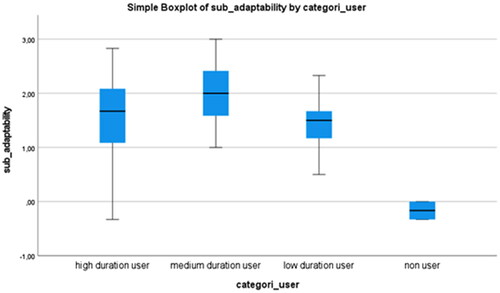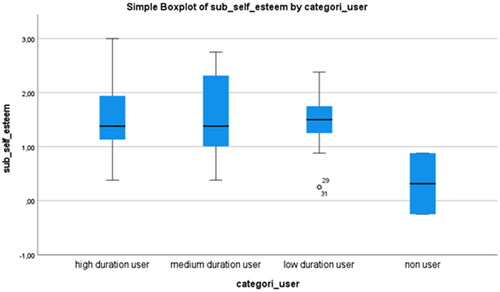Figures & data
Table 1. The three subscales in PIADS, description of what the subscale measures, and items included in each subscale.
Table 2. Display the three subscales and mean values of the ratings from all participants, adults and children. Group comparison between adults and children.
Table 3. Display the items included in PIADS. Mean values of the ratings from all participants, adults and children, and a group comparison between adults and children.
Table 4. Categorization of users based on the duration of use.
Table 5. Mean values, standard deviation, and range in mean values in each of the subcategories competence, adaptability, and self-esteem.
Figure 1. Boxplot displaying a variation of the impact of eye-gazed assistive technology on the subscale of competence based on the duration of use.

Data availability statement
The data that support the findings of this study are available from the corresponding author, [MA], upon reasonable request.


